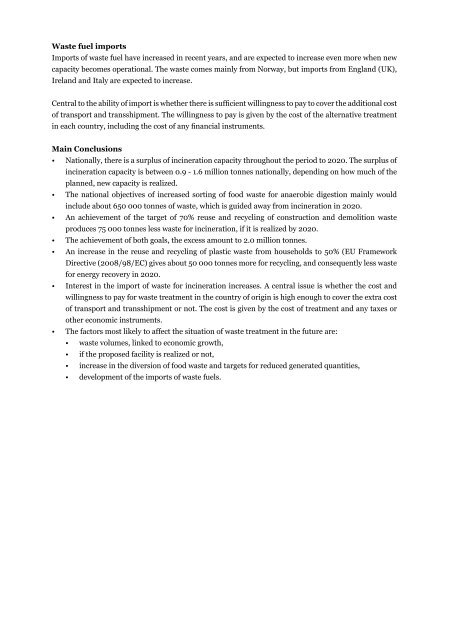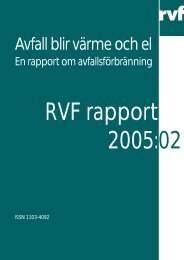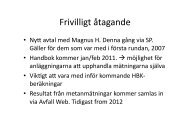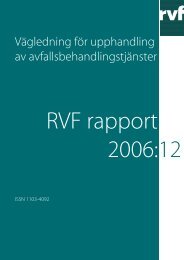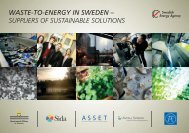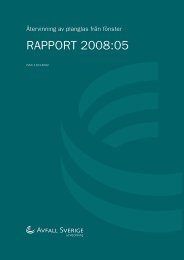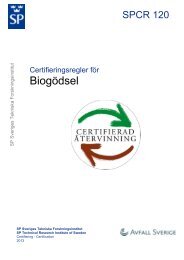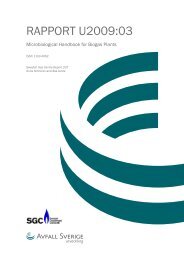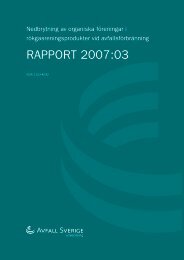avfallsförbränning till år 2020 - Avfall Sverige
avfallsförbränning till år 2020 - Avfall Sverige
avfallsförbränning till år 2020 - Avfall Sverige
Create successful ePaper yourself
Turn your PDF publications into a flip-book with our unique Google optimized e-Paper software.
Waste fuel importsImports of waste fuel have increased in recent years, and are expected to increase even more when newcapacity becomes operational. The waste comes mainly from Norway, but imports from England (UK),Ireland and Italy are expected to increase.Central to the ability of import is whether there is sufficient willingness to pay to cover the additional costof transport and transshipment. The willingness to pay is given by the cost of the alternative treatmentin each country, including the cost of any financial instruments.Main Conclusions• Nationally, there is a surplus of incineration capacity throughout the period to <strong>2020</strong>. The surplus ofincineration capacity is between 0.9 - 1.6 million tonnes nationally, depending on how much of theplanned, new capacity is realized.• The national objectives of increased sorting of food waste for anaerobic digestion mainly wouldinclude about 650 000 tonnes of waste, which is guided away from incineration in <strong>2020</strong>.• An achievement of the target of 70% reuse and recycling of construction and demolition wasteproduces 75 000 tonnes less waste for incineration, if it is realized by <strong>2020</strong>.• The achievement of both goals, the excess amount to 2.0 million tonnes.• An increase in the reuse and recycling of plastic waste from households to 50% (EU FrameworkDirective (2008/98/EC) gives about 50 000 tonnes more for recycling, and consequently less wastefor energy recovery in <strong>2020</strong>.• Interest in the import of waste for incineration increases. A central issue is whether the cost andwillingness to pay for waste treatment in the country of origin is high enough to cover the extra costof transport and transshipment or not. The cost is given by the cost of treatment and any taxes orother economic instruments.• The factors most likely to affect the situation of waste treatment in the future are:• waste volumes, linked to economic growth,• if the proposed facility is realized or not,• increase in the diversion of food waste and targets for reduced generated quantities,• development of the imports of waste fuels.


